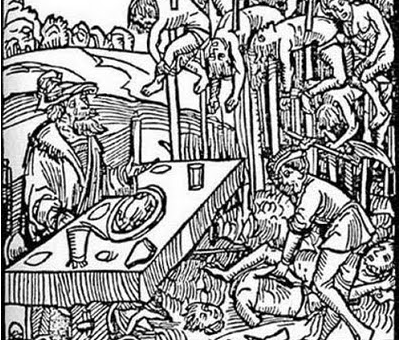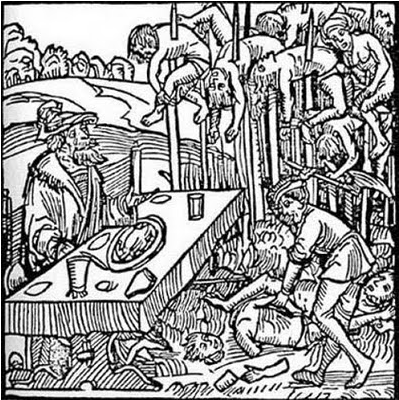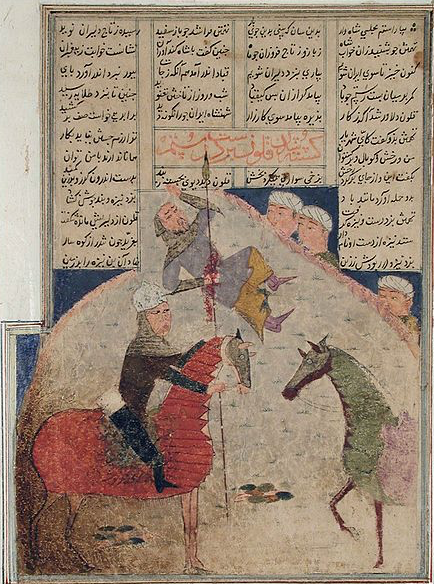
Impalement was a torturous form of execution. There were several ways in which our ancestors impaled people, and research shows that Vlad the Impaler used longitudinal, frontal, and dorsal impalement.
First, we will take a look anal impalement. This form of impalement was mostly practiced in ancient Egypt, the Middle East, and the Mediterranean. It involved taking a blunt pole with a narrow end that was pushed up through either the anus or the vagina.
The reason why the pole was blunt was to prevent death from happening too quickly. The blunt pole being shoved up into the victim was unlikely to puncture the condemned person’s organs and it also allowed for the corpse to be easily displayed.
To begin this type of impalement, the thick end of the pole was placed in the ground. Each pole had to be adjusted to the height of the condemned, with the top of the pole being a touch higher than the bottom of the condemned.

The pole and the condemned person’s bottom were greased. The condemned was then lifted up and placed on the pole. If the blunt end was too large to enter the condemned, a knife was used to enlarge the entry point.
When the condemned was placed on the pole, he or she could stand on his or her tippy toes for as long as possible. It was impossible for the condemned to remove themselves from the pole in this position.
Eventually, the condemned would come down flat on his or her feet, pushing the pole in further. The condemned could remain in this position for days, but eventually the legs would give out.

During the 15th century, impalement was Vlad’s favorite way to both torture and kill men, women, and children.
One method he used involved stripping the condemned and tying each of the victim’s legs to a horse. The horses would pull the victim’s legs apart as the executioner inserted the stake and hoisted the condemned into the air. The horses would eventually pull the body down until the stake exited the mouth
A sharpened stake might also have been hammered in through the anus and out through the chest or abdomen. The pole would then be uprighted and the condemned displayed for all to see.

Of course, a sharpened pole could also be pushed through the back or chest and the condemned would be suspended thus until the weight of his body caused him to slide down the pole. We see this form of impalement in many of the woodcuts depicting Vlad and his victims.
None of these methods of impalement resulted in a quick death. The condemned might have lasted anywhere from a few hours to up to six days.
Women would die faster than the men because of the extreme blood loss, but the men would often linger in excruciating agony with no hope of mercy.

